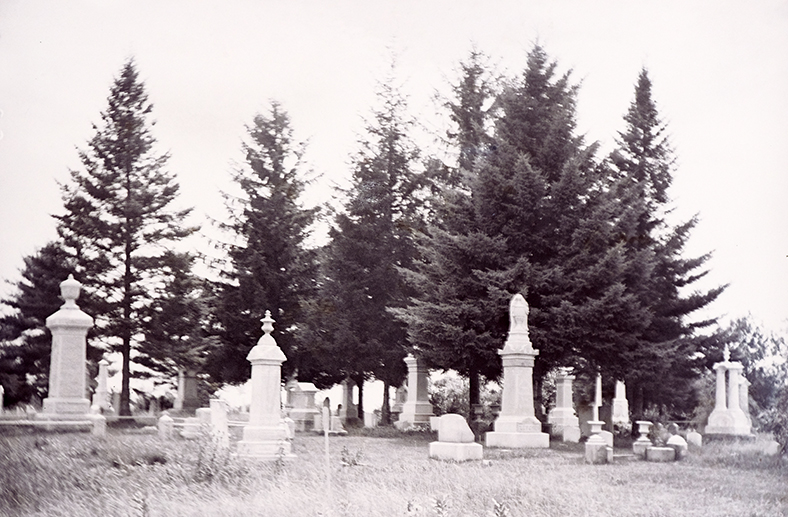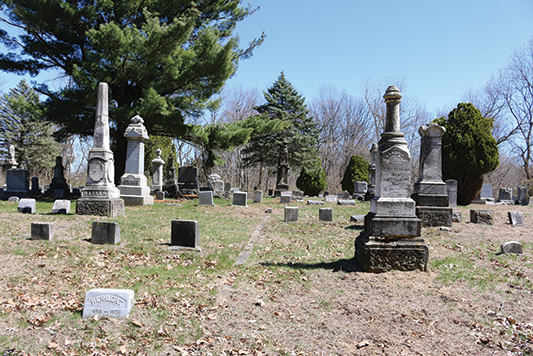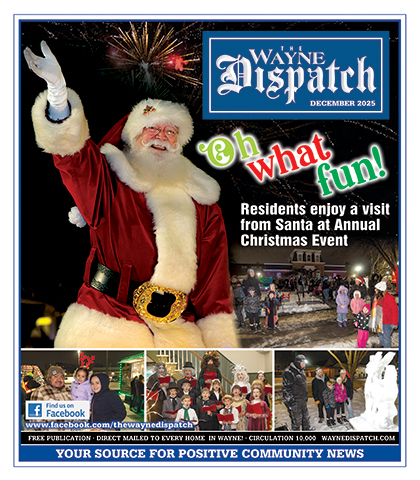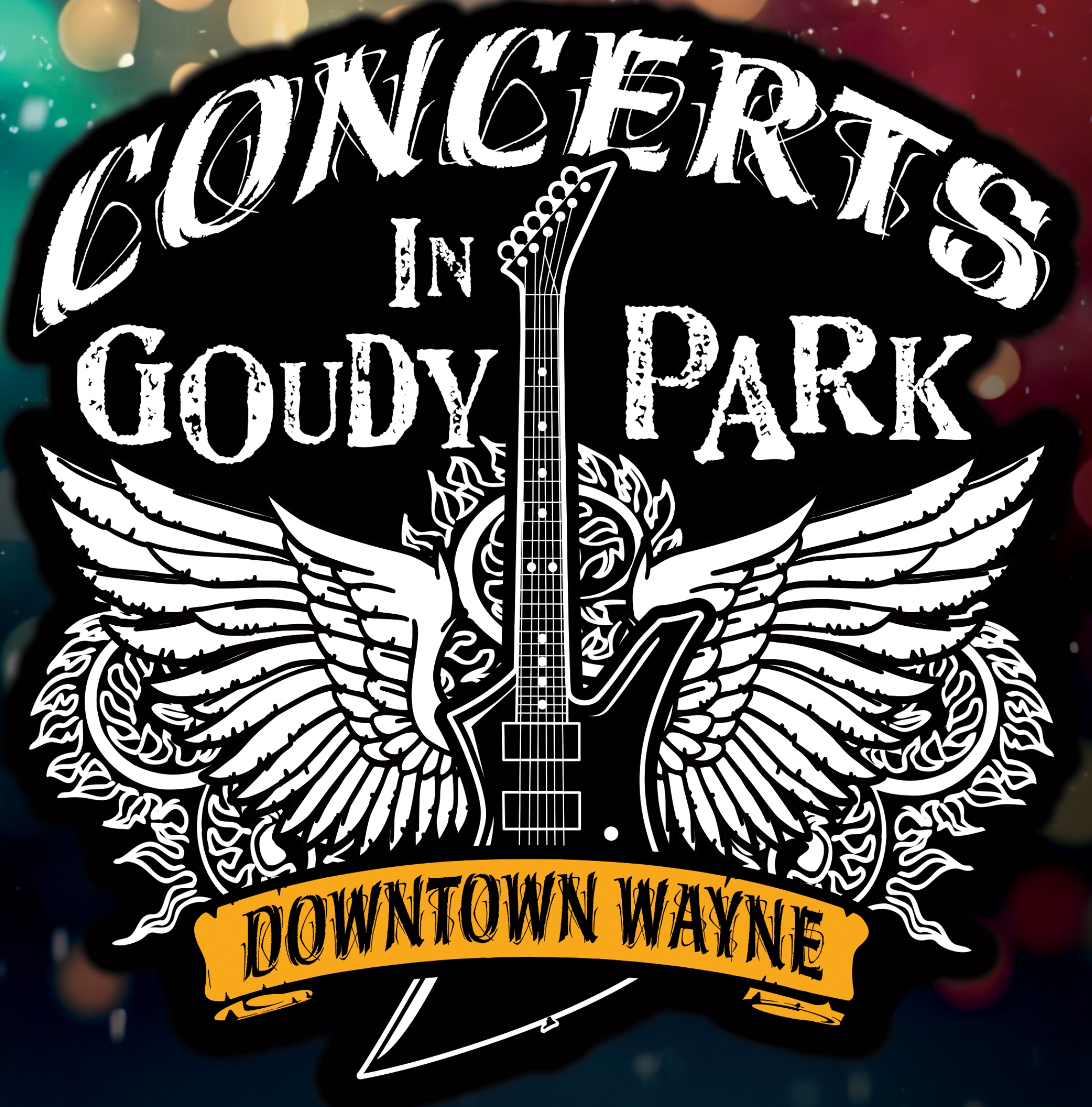Silent cities speak history
 The earliest known death in what has become the City of Wayne happened in what was known as Johnson’s Tavern built in 1824. Stephen Gifford Simmons who purchased the tavern from George M. Johnson in 1825 with his wife Lavina, and two daughters moved to the frontier of the Territory of Michigan to operate the Johnson’s tavern. In one of his jealous and drunken rages in 1830, Stephen Gifford Simmons beat his wife, Lavina to death. He was captured by local authorities, brought to trial in Detroit, was found guilty of the charges, and was sentenced to death by hanging. On September 24, 1830 in Campus Martius the sentence was carried out. What you may not know is that Wayne’s own resident, Stephen Gifford Simmons was the last Michiganian to be sentenced to death under Michigan law. The specter created by his hanging in 1830 Detroit, was the catalyst which sparked the debate regarding the death penalty and resulted in Michigan becoming the first state in the country to ban capital punishment. With that background I begin the History of Wayne Cemeteries starting with:
The earliest known death in what has become the City of Wayne happened in what was known as Johnson’s Tavern built in 1824. Stephen Gifford Simmons who purchased the tavern from George M. Johnson in 1825 with his wife Lavina, and two daughters moved to the frontier of the Territory of Michigan to operate the Johnson’s tavern. In one of his jealous and drunken rages in 1830, Stephen Gifford Simmons beat his wife, Lavina to death. He was captured by local authorities, brought to trial in Detroit, was found guilty of the charges, and was sentenced to death by hanging. On September 24, 1830 in Campus Martius the sentence was carried out. What you may not know is that Wayne’s own resident, Stephen Gifford Simmons was the last Michiganian to be sentenced to death under Michigan law. The specter created by his hanging in 1830 Detroit, was the catalyst which sparked the debate regarding the death penalty and resulted in Michigan becoming the first state in the country to ban capital punishment. With that background I begin the History of Wayne Cemeteries starting with:

Historic Glenwood Cemetery
Frontier graves
The practice across all American frontiers was that people were buried where they died. It is presumed that Lavina Simmons was buried near where she died. As noted in the book by David G. Chardavoyne, “A Hanging in Detroit – Stephen Gifford Simmons and the Last Execution under Michigan Law” The author states ” We do know, because of a claim against Stephen’s estate, that a local [Detroit] cabinet maker named William Durell charged the Simmons estate a total of thirty-six dollars ‘for making [a] coffin and taking the Boddy of the deceased to his farm for burial.” This account is recorded in the Wayne County Probate Case 440 (Account of Levi Cook). Presumably, upon arrival at Johnson’s Tavern, the Simmons heirs buried Stephen there, on the homestead, perhaps next to Levina or perhaps not; there is no evidence of where either of them are buried. If this was the case, Lavina and Stephen are buried somewhere between Second and Elizabeth Streets North of Michigan Avenue West. Given almost 200 years since their deaths and burials, I trust that no remains or the exact locations of their burials could be found today. This author likes to believe that the heirs chose the high ground on the western edge of their property to intern the remains of their parents. This leads us to the next burial practice:
Burial plots
Burial Plots are similar to Frontier Graves as they typically are resting places set aside on the owners property for family members who have passed. The Old Wayne Michigan Avenue Cemetery began as the family resting place for Ezra Derby’s first wife, Sarah who died in 1832. Derby selected the hill at the west end of his property just north of the Chicago road (Michigan Avenue), [perhaps it was chosen since Lavina and Stephen Simmons were already buried on this hill two years prior]. In fact, three of Ezra’s five wives are buried in the family burial plot. NOTE: Ezra Derby bought the Johnson’s Tavern from Stephen Gifford Simmons’ children. He constructed the first sawmill, frame house, store and blacksmith shop in Wayne. The Western half of the Old Wayne Michigan Avenue Cemetery was deeded to the Village of Wayne by the James Clark Family whose acreage was immediately to the west of the Derby property and whose burial plot was adjacent to the Derby Family Burial Ground. In 1918, the village closed burials with the last known burial happening in 1917.

You can visit the historic Glenwood Cemetery still today.
Churchyards
Churchyards became popular during the 17th through 20th Centuries and as their title suggests, they were typically next to the church and were near town centers. As villages grew, churchyards became land-locked, overcrowded and were considered to be health hazards by the late 19th Century. Given Wayne had the Michigan Avenue Cemetery, it wasn’t until after the Catholic church was established that a churchyard was also created, that being St. Mary’s Catholic Cemetery. The land for which was donated by Jeremiah O’Connor, the Irish immigrant who was instrumental in founding St Mary’s Parish. St. Mary’s is now closed to new burials, though living persons who own a plot can be buried in it when they pass. Like many cemeteries in towns, church graveyards became landlocked and are closed to new lots being purchased and used – they simply are full after decades of burials.
Rural Cemeteries – Municipal
(Township, Village, City) & Potter’s field
As referenced in the discussion about St. Mary’s Cemetery, by the later quarter of the 19th Century, as villages grew, they closed off land for burials within village limits. Again during the latter quarter of the 19th Century, the thoughts were that cemeteries posed health risks and were utilizing valuable urban land, so the municipalities created rural cemeteries away from the urban areas. Municipalities created ordinances forbidding the burial of people on village residential or commercial lots. To this end, the village of Wayne opened Glenwood Cemetery in 1871 out in the rural countryside far away from the populated city center at that time. These cemeteries were more “park like” in that the lots were well organized, with rolling terrain, planned vista’s and walkways, three dimensional statues, vaults ( McGee, Stellwagen-Collins, and King) and tombstones that were works of art. In fact, many families picnicked on the burial site of their beloved relatives who had passed on, they left flowers, pebbles or coins on the markers to show their love and affection for the departed.
While many cemeteries maintained a section for the poor, the Eloise Cemetery in Westland is a special municipal cemetery as it was entirely a Potter’s Field for poor deceased patients whose families could not afford to transport their loved one’s body home for burial, or those whose bodies were never claimed.
Other rural cemeteries were corporately owned.
Cemeteries – Corporate
Businessmen took notice that money could be made in death. “Funeral Homes removed the health fears of hosting the services for your deceased family member in your front parlor, to having the body displayed and services conducted in these “funeral homes”. Their hearses were some of the first ambulances. Corporations were formed to purchase land for cemeteries and they typically hired a local attorney as their “Agent” to promote and handle the sale of lots in their corporate “for profit” cemeteries. The Merriman Family Burial Grounds and much of their farm was purchased by a Chicago Group which opened Clairview Cemetery at Merriman Road and Michigan Avenue. In 1922 during the “Jim Crow” era when many cemeteries would not accept deceased black persons, a group of Detroit Pastors purchased Clairview and renamed the cemetery Westlawn, already being the owners of Eastlawn Cemetery in Detroit. Westlawn is no longer owned by the Detroit pastor group, but it remains a corporate cemetery to this day. A unique feature of Westlawn Cemetery is their Columbarium, a mausoleum hosting remains and cremains, in the southwest corner of the cemetery.
The City of Wayne is somewhat unique in that it has within it’s city limits six types of “Silent Cities” which tell the story of cemeteries and of it’s citizens from frontier wilderness, to village and city status. Please join the Wayne Historical Society on Sunday, October 6th from 1-3 p.m. at Westlawn Cemetery for the Wayne Historical Society’s 11th Annual Historic Cemetery Walk.
“The wealthiest place on the planet is just down the road. It is the cemetery. There lie buried companies that were never started, inventions that were never made, bestselling books that were never written, and masterpieces that were never painted. In the cemetery is buried the greatest treasure of untapped potential.”




